Philippine noodle dishes encompass a vibrant tapestry of flavors, reflecting the country's diverse culinary heritage. One staple is "Pancit," a noodle dish with various regional iterations. "Pancit Canton" features stir-fried egg noodles with vegetables and meat, while "Pancit Palabok" offers rice noodles topped with shrimp, pork cracklings, and a savory sauce. "Lomi" presents a thick soup filled with noodles, meat, and vegetables, perfect for warming the soul. "Sotanghon" showcases delicate glass noodles in a clear broth with chicken and vegetables. Not only do these noodle dishes tantalize the taste buds, but they also serve as a celebration of the Philippines' diverse and rich culinary heritage.
Filipino Spaghetti
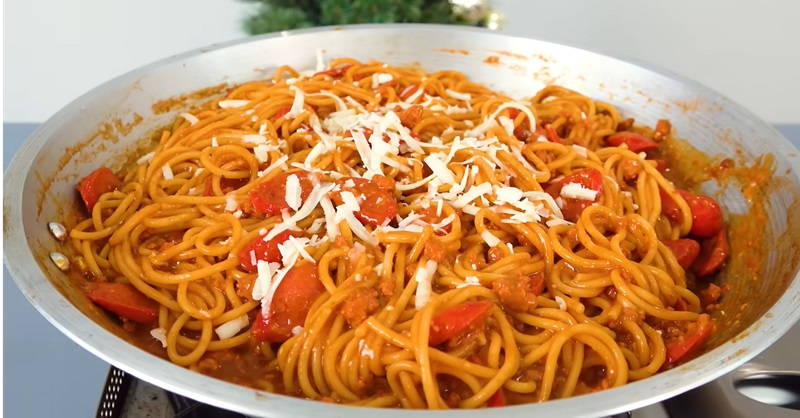
Filipino spaghetti is a delightful blend of Italian and Filipino flavors. This unique dish showcases a sweet sauce made from tomato sauce, brown sugar, and banana ketchup, setting it apart from traditional Italian Bolognese. Toppings typically include sliced hot dogs or smoked longganisa sausages, giniling (ground meat), and grated cheese. Beloved as a comfort food in the Philippines, it is commonly featured at special occasions, particularly children's birthdays. The origins of this dish can be traced back to the American Commonwealth Period between the 1940s and 1960s, when tomato shortages during World War II prompted local innovation with the introduction of banana ketchup and the adaptation of spaghetti to cater to Filipino preferences for sweetness.
Batchoy
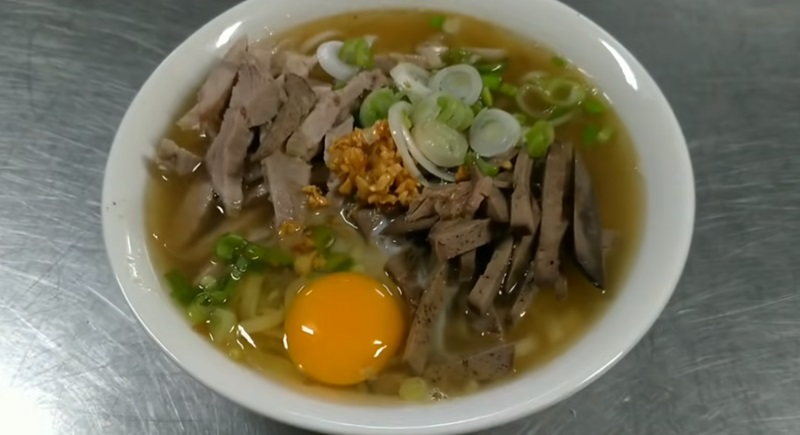
Batchoy is a well-loved Filipino soup hailing from Iloilo province. This soup is renowned for its luscious and savory broth, plentiful of noodles, and a medley of enticing ingredients. The essence of batchoy lies in a meticulously simmered pork or beef broth, taking hours to develop its deep and robust flavor. Enhanced with soy sauce, fish sauce, and an assortment of spices, the soup achieves a heightened taste profile. Traditionally prepared with thick and chewy miki noodles, batchoy can also feature other noodle varieties. An integral part of this soup is the inclusion of pork or beef offal, such as liver, intestines, and kidneys, which impart a distinct texture and flavor. Additional ingredients include sliced pork or beef, garlic, onions, and vegetables like cabbage and spring onions. Topping off the batchoy experience are crispy fried garlic, spring onions, and crushed chicharon (pork cracklings), adding layers of texture and flavor. Best enjoyed steaming hot, batchoy is often accompanied by a side of bread or rice.
Mami Soup
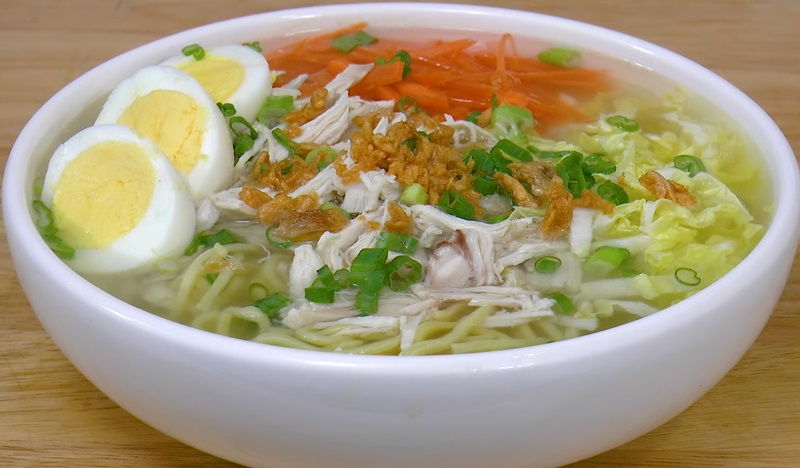
Mami soup is a noodle soup featuring egg noodles, tender meat (typically chicken or beef), and a delicious broth. Believed to have originated from Chinese cuisine, Filipinos have embraced and adapted it over time. The egg noodles used in mami soup are thin and slightly chewy, adding a delightful texture. Thinly sliced meat allows for easy enjoyment in every spoonful. The broth, often seasoned with soy sauce and garlic, has a rich and savory taste that is distinctly Filipino. To enhance the flavors and presentation, mami soup is garnished with chopped green onions, fried garlic, and a hard-boiled egg. Some variations may include additional ingredients like vegetables, tofu, or meatballs. This comforting dish is commonly enjoyed as a hearty meal, especially on rainy days or when seeking comfort food.
Sopas
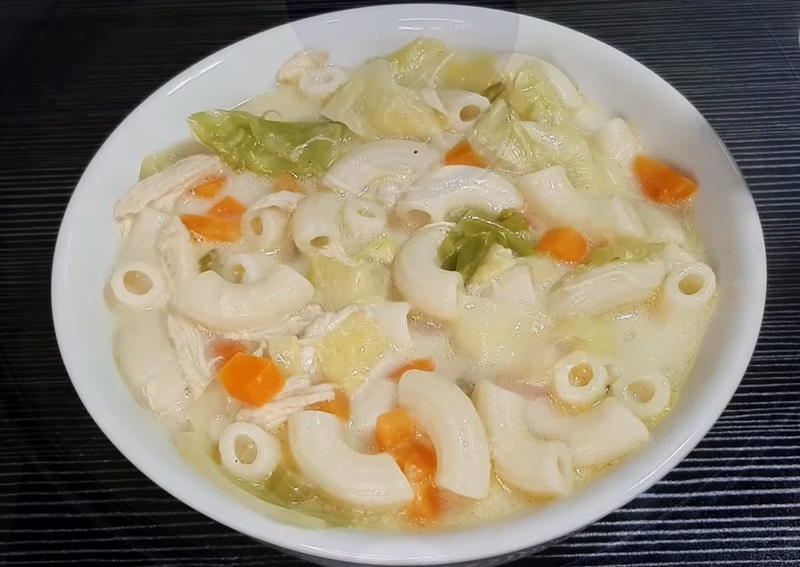
Sopas is a popular noodle dish in the Philippines that is loved for its comforting and hearty flavors. It is a creamy soup made with macaroni noodles, chicken, vegetables, and milk. Sopas is typically enjoyed as a light meal or snack, especially during cool weather or when someone is feeling under the weather. The dish starts by sautéing garlic and onions in a pot until fragrant. Then, chicken pieces are added and cooked until browned. Water or chicken broth is then poured into the pot, along with macaroni noodles and vegetables such as carrots, cabbage, and celery. The mixture is simmered until the noodles are cooked and the flavors have melded together. To give sopas its signature creaminess, evaporated milk or fresh milk is added towards the end of the cooking process. This adds a rich and velvety texture to the soup. Some variations of sopas also include additional ingredients like hotdogs, ham, or liver spread for added flavor. Sopas is often garnished with chopped scallions or fried garlic for a burst of freshness and extra crunch. It is best enjoyed hot, straight from the pot, and is a popular comfort food for Filipinos of all ages.
Kinalas

Kinalas is a popular noodle dish in the Philippines, specifically in the Bicol region. It is known for its flavorful broth and chewy noodles. The dish is traditionally made with fresh miki noodles, which are thick and springy, and cooked in a rich and savory broth made from beef or pork bones, beef or pork meat, and various spices and seasonings. The broth is simmered for hours to extract the deep flavors from the ingredients, resulting in a hearty and aromatic base. Kinalas is typically garnished with toppings such as chicharon (fried pork rinds), spring onions, and sometimes boiled egg or crispy pork belly. The combination of these toppings adds texture and enhances the overall taste of the dish. What sets kinalas apart is the unique way it is served. Instead of the noodles being submerged in the broth, they are served separately and the broth is poured over them at the table. This allows the noodles to stay firm and retain their chewiness. Overall, kinalas is a delightful and comforting noodle dish that showcases the rich flavors and culinary heritage of the Bicol region in the Philippines.
Shing-a-ling (food)
-1704898252.jpg)
Shing-a-ling is a traditional Filipino noodle dish that is popular for its crispy and savory texture. It is made from thin rice noodles, also known as miki, that are deep-fried until they become golden brown and crispy. The noodles are then seasoned with a flavorful combination of spices such as garlic, onion, and soy sauce. Shing-a-ling is often enjoyed as a snack or appetizer, as its crunchy texture makes it highly addictive. This dish offers a unique taste experience, as the crispy noodles are complemented by the rich and savory flavors from the seasonings. Its simplicity in preparation and affordability have made it a favorite among Filipinos. Shing-a-ling is best enjoyed on its own or paired with a dipping sauce such as vinegar or spicy ketchup.
Maki Mi
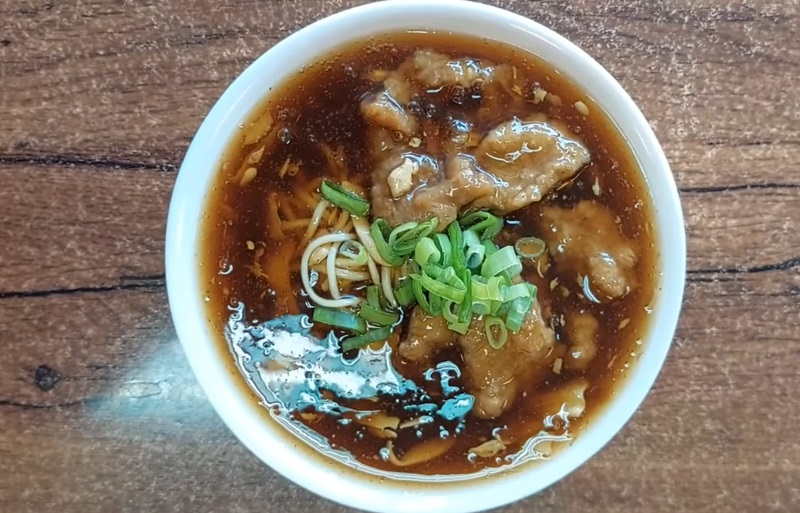
Maki mi is a popular noodle dish in the Philippines that is loved for its flavorful combination of ingredients and its comforting taste. This dish features a mix of egg noodles and rice noodles, cooked to perfection and tossed with a savory sauce. Maki mi is typically made with a variety of ingredients that add depth and texture to the dish. It commonly includes slices of pork, chicken, or shrimp, along with vegetables such as cabbage, carrots, and bell peppers. These ingredients are stir-fried together, creating a harmonious blend of flavors. The sauce used in maki mi is a key component that elevates the dish. It is a mixture of soy sauce, oyster sauce, and other seasonings, creating a rich and umami-filled flavor profile. The sauce coats the noodles and ingredients, infusing them with its delicious taste. Maki mi is often garnished with spring onions and crushed chicharon (fried pork rinds) for added crunch and flavor.
Pancit Palabok
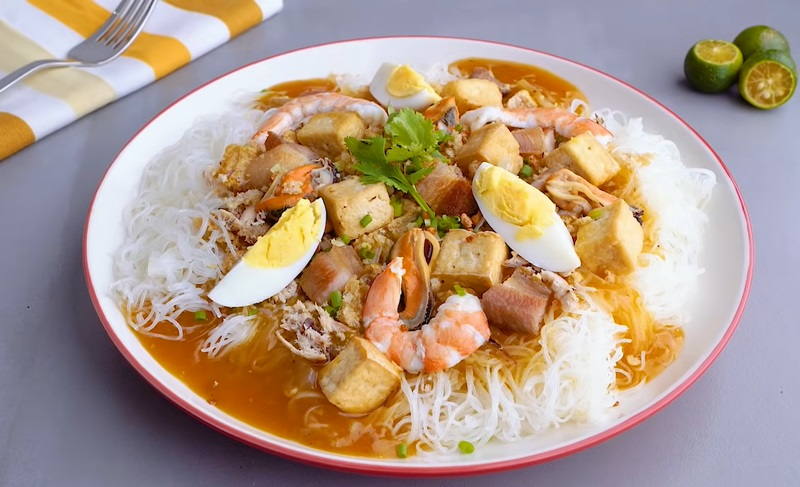
Pancit palabok is a popular Filipino noodle dish that is loved for its vibrant flavors and unique texture. It is a festive dish commonly served during special occasions and celebrations. The dish features a bed of thick rice noodles, topped with a flavorful shrimp sauce made from ground pork, shrimp broth, and annatto seeds for a beautiful orange color. The noodles are then garnished with an array of toppings, which may include boiled shrimp, hard-boiled eggs, crispy pork cracklings, tinapa (smoked fish flakes), green onions, and calamansi (Filipino lime) for a tangy kick. The combination of these ingredients creates a symphony of flavors, ranging from savory to salty and even slightly sweet. Pancit palabok is often enjoyed as a main course, but it can also be served as a side dish or a snack. Its rich and hearty flavors make it a satisfying meal that is perfect for sharing with family and friends. Whether served at a party or enjoyed for a casual lunch, this noodle dish is sure to impress with its delicious taste and vibrant presentation.
Pancit Bihon
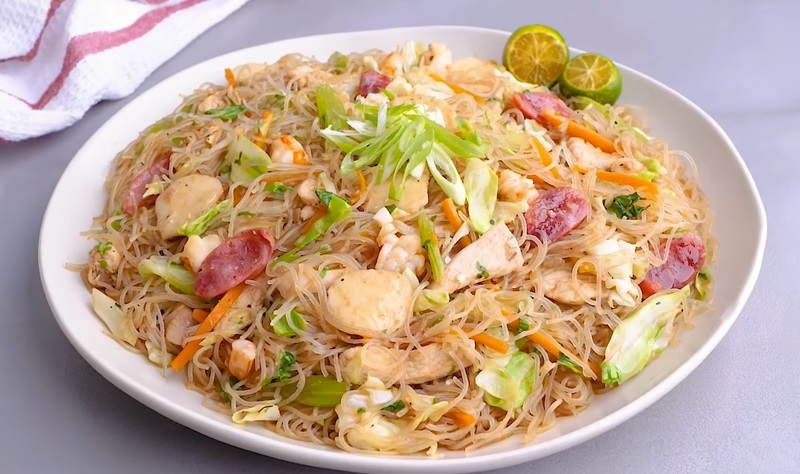
Pancit bihon is a well-loved dish in the Philippines, consisting of thin rice noodles that are stir-fried together with various ingredients. It is a classic and essential part of Filipino cuisine, often enjoyed during special events and gatherings with family and friends. To prepare pancit bihon, the rice noodles are soaked in water until they become soft and pliable. They are then cooked with a combination of vegetables like carrots, cabbage, and green beans, creating a delightful mix of flavors and textures. Some versions of pancit bihon also incorporate meat, such as chicken, pork, or shrimp, to enhance its taste and provide protein. The dish is typically seasoned with soy sauce and other condiments like oyster sauce or fish sauce, giving it a savory yet subtly sweet profile. A garnish of green onions and a squeeze of calamansi or lemon juice adds a refreshing tang. Its vibrant colors, delicious flavors, and satisfying texture make pancit bihon a favorite among both locals and visitors.
Sotanghon
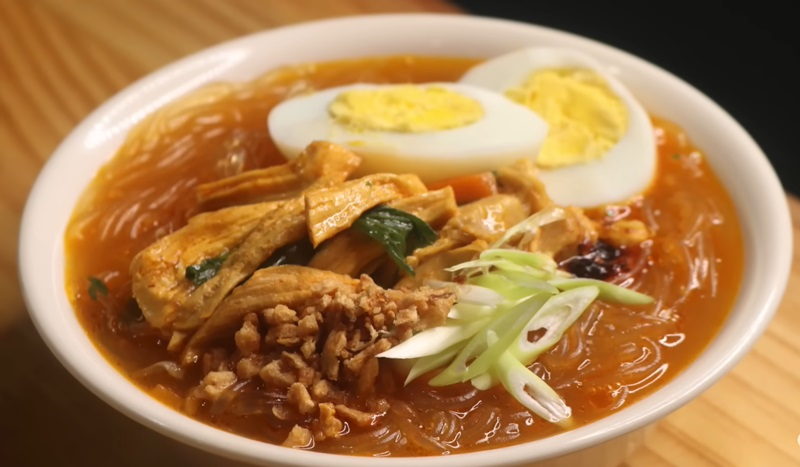
Sotanghon is a popular Filipino noodle dish that is commonly served during special occasions and celebrations. It is made with sotanghon noodles, which are thin and transparent noodles made from mung bean starch. The dish itself is a delightful blend of stir-fried noodles, vegetables, and your choice of meat or seafood. To prepare Sotanghon, the noodles are first soaked to soften them before being stir-fried with garlic, onions, and a variety of vegetables like carrots, bell peppers, and cabbage. You can opt for chicken, pork, shrimp, or a combination of these as your protein. Seasoned with soy sauce, oyster sauce, and other flavor-enhancing condiments, Sotanghon is a versatile dish that can be enjoyed as a main course or a side dish. The noodles have a unique chewy texture that allows them to absorb the wonderful flavors of the ingredients, resulting in a truly satisfying and delicious experience. Sotanghon truly showcases the rich flavors and textures of Philippine cuisine.
Pancit Canton
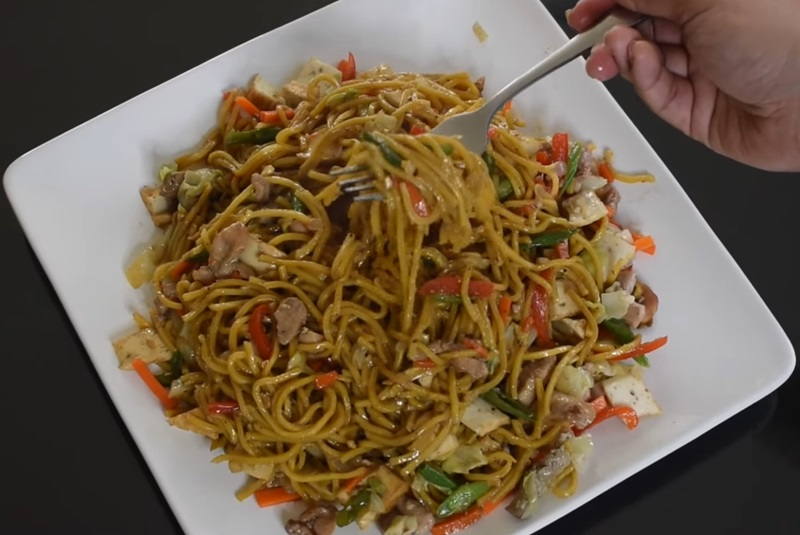
Pancit Canton is a beloved Filipino dish that highlights the rich and diverse culinary heritage of the Philippines. This delectable noodle dish features thick egg noodles, stir-fried with an assortment of vibrant vegetables, meat or seafood, and a savory sauce. The cooking process begins by sautéing garlic and onions in oil, creating a fragrant foundation for the other ingredients. The noodles are then added and cooked until they absorb the flavors of the sauce, resulting in a mouthwatering taste. Sliced chicken, pork, shrimp, or a combination of these proteins are commonly included to enhance the dish. To add a pop of color and texture, various vegetables like carrots, bell peppers, cabbage, and snow peas are incorporated, giving Pancit Canton its visually enticing appeal. In the Philippines, this dish is often served as a special treat during birthdays and other celebrations. Its delightful combination of flavors, textures, and vibrant colors has made it a delightful representation of the exquisite Philippine cuisine.
Pancit miki
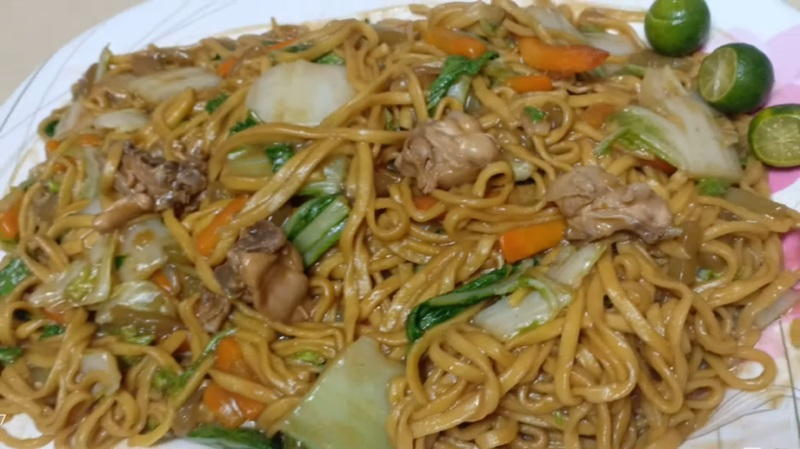
Pancit Miki, a traditional Filipino noodle dish, is a favorite choice for special occasions and gatherings. This delectable dish features stir-fried thick egg noodles called "miki," combined with a medley of vegetables, meat, and flavorful seasonings. The cooking process usually begins with sautéing garlic and onions in oil, followed by adding sliced pork, chicken, or shrimp. The dish is further enhanced with the addition of colorful vegetables like carrots, cabbage, bell peppers, and snow peas, creating a delightful explosion of flavors and textures. The miki noodles absorb all the deliciousness from the ingredients. A combination of soy sauce, oyster sauce, and occasionally fish sauce is added to elevate the taste, resulting in a savory and subtly sweet profile. For an extra crunch and richness, some variations of pancit miki include toppings like hard-boiled eggs and chicharon (crispy pork rinds).
Pancit Luglug
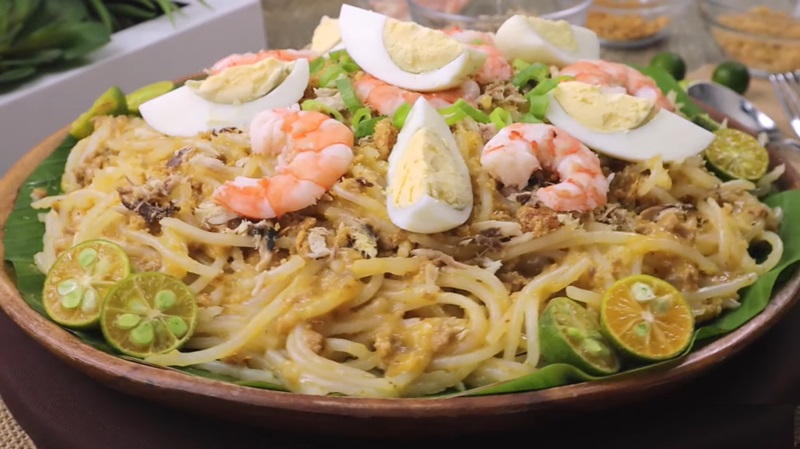
Pancit luglug is a popular noodle dish in the Philippines known for its thick rice noodles, flavorful sauce, and various toppings. It originated from the province of Pampanga, which is known for its rich culinary heritage. The dish is made by cooking thick rice noodles until they are tender and then coating them with a rich, savory sauce made from ground pork, shrimp, and annatto seeds. The sauce is cooked until it thickens and is then poured over the noodles, giving them a vibrant orange color. Pancit luglug is typically garnished with a variety of toppings such as crushed chicharon (pork cracklings), hard-boiled eggs, shrimp, green onions, and fried garlic. These toppings add texture and flavor to the dish, making it even more enjoyable. The combination of the soft noodles, flavorful sauce, and toppings creates a delightful balance of tastes and textures in every bite.
Seaweed Pancit
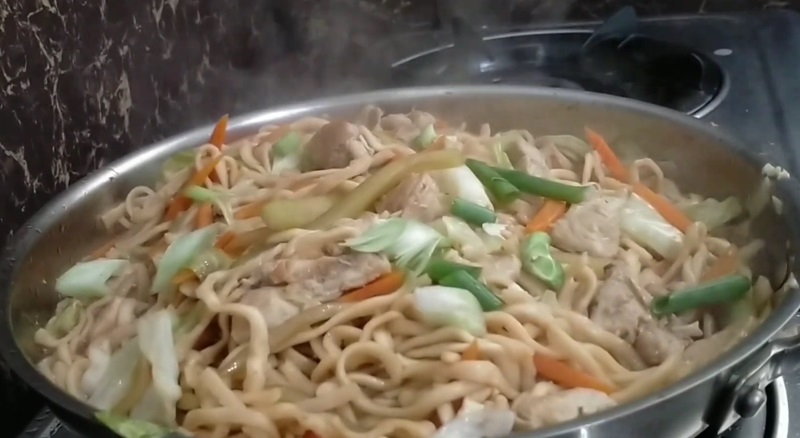
Seaweed pancit, a beloved noodle dish in the Philippines, is a testament to the distinct flavors and textures found in local cuisine. This delectable dish expertly blends the oceanic taste and chewy texture of seaweed with the savory goodness of stir-fried noodles. Sourced from the coastal areas of the Philippines, the star ingredient, seaweed, adds a touch of the sea to each bite. Thin rice noodles are the preferred choice for this dish, as they beautifully absorb the flavors of the other ingredients. To create Seaweed Pancit, the noodles are stir-fried alongside a medley of vegetables like carrots, cabbage, and bell peppers. The dish is then seasoned with soy sauce, garlic, and other spices, elevating its taste.
Miswa
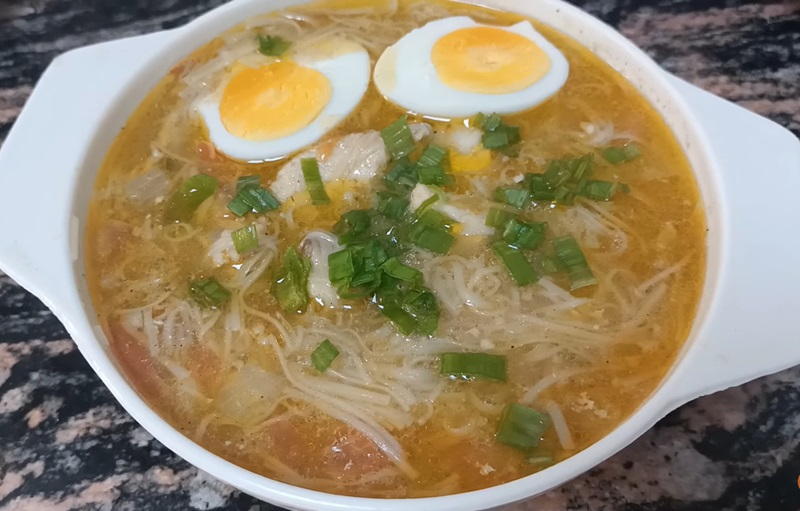
Miswa, a well-liked noodle dish in the Philippines, is renowned for its thin, wiry noodles. These delicate noodles, made from wheat flour, possess a slightly chewy texture. Typically, miswa is served in a clear broth, which is often flavored with meat or seafood. The broth is prepared by simmering meat bones or seafood shells for hours, resulting in a flavorful and aromatic base. After straining to remove impurities, the miswa noodles are cooked separately and added to the broth just before serving to retain their firmness. To enhance the dish's freshness and color, miswa is often garnished with thinly sliced pork, shrimp, or chicken, as well as vegetables like carrots, cabbage, and green onions. Some variations of miswa incorporate fried garlic or a splash of calamansi juice for extra flavor.








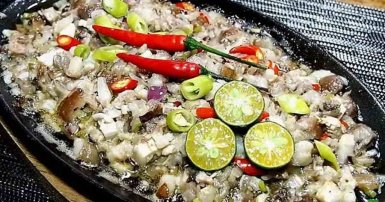


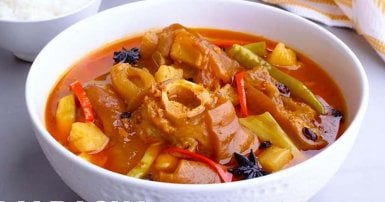

-1709813013.jpg)


